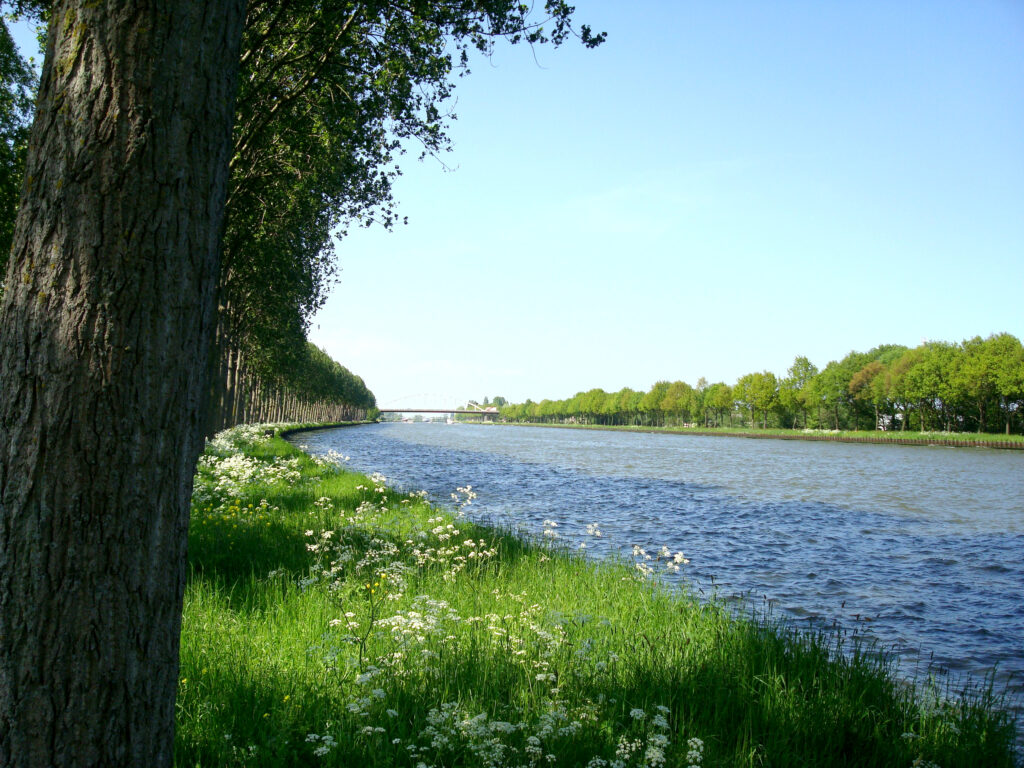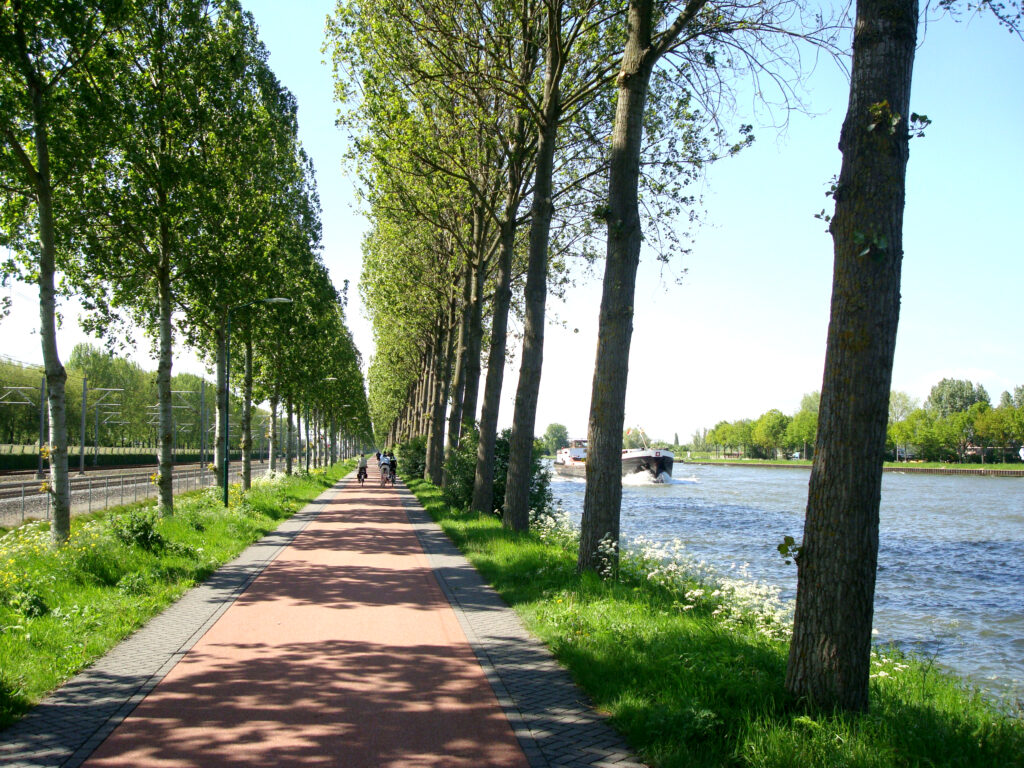The magnificent green giant, which absorbs huge amounts of carbon dioxide, is our ally in the fight against climate change and its effects on urban areas. Some people are afraid of it but knowledge and technology are making it less of a threat. It is truly worth forming a friendship with this incredible tree!
The power from nature
The poplar is the fastest growing tall tree in temperate climate. Depending on the variety, it can reach 30 or even 40 metres in height, growing at first 1.5 or even up to 2.5 metres per year.
Therefore, 10 years after planting, we already have a decent urban tree, and after 20 years, a more than 20-metre-tall giant that is still growing.

The poplar is a towering and fast-growing creature, renowned for its robust metabolism. Its ability to consume vast amounts of carbon dioxide and release oxygen is of critical importance to the global environment. Locally, the poplar has numerous benefits for urban climate adaptation. For example, its extensive leaf coverage leads to “sweating”, or the release of water vapor, cooling and humidifying large quantities of air. This sweating process also releases phytoncides, which have been shown to have positive effects on human health. Additionally, the tree’s expansive and dense crown provides much-needed shade to the surrounding area.
The poplar is resistant to harsh urban conditions and is extremely efficient at purifying the soil, water and air.
Safety thanks to technology
The reputation of poplars as a problematic tree species stems from several factors, including their fast growth leading to lower durability, potential for large branches to break off, allergenic properties of its pollen or its relatively short life span (only 100 years for some varieties). This is why poplar planting has been almost completely abandoned in some countries. Its reputation as dangerous and allergenic has clung to the tree.
Fortunately, the shortcomings of nature can be made up for by modern knowledge and technology.
Regular observation by specialist dendrologists, proper pruning, and stress tests and CT scans can ensure the safety and longevity of mature poplars. Additionally, planting only female specimens that don’t produce pollen can alleviate allergenic concerns, and selecting longer-lived varieties like the black and white poplar or implementing a planned generational replacement can extend their lifespan. Modern knowledge and technology can help mitigate the perceived disadvantages of poplars and make them a valuable asset in the fight against climate change.

Time to act!
As soon as possible, it would be wise to incorporate poplar trees on a large scale into industrial and warehousing areas. These towering trees would harmoniously blend in with the surrounding buildings and greatly improve the harmful microclimate. Placing a row of poplars can also visually separate these areas from residential areas.
Moreover, it is worth considering the aesthetic benefits and heat resistance that poplars would bring to our cities. If every large commercial building or grocery store were surrounded by at least one row of poplar trees, it would greatly enhance their appearance. It might even be necessary to enforce legislation that requires these types of buildings to be concealed behind a lush, fast-growing green screen.
With the looming threat of climate change, we should welcome the poplar as a valued ally in our cities!
Łukasz Kamiński












